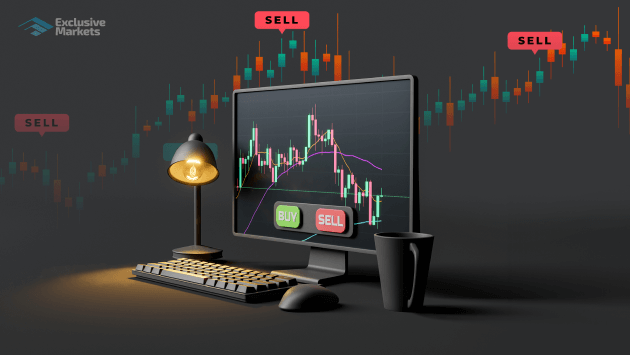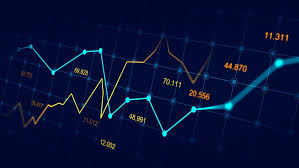
Understanding Global Forex Trading: A Comprehensive Guide
The foreign exchange (forex) market is one of the largest and most liquid financial markets in the world, with a daily trading volume exceeding $6 trillion. Traders engage in this dynamic arena for various reasons, ranging from speculation and investment to managing economic exposure and facilitating international investments. Additionally, with the advent of technology, platforms such as global forex trading Crypto Trading App have made trading more accessible than ever.
What is Forex Trading?
Forex trading involves the buying and selling of currency pairs, with the goal of profiting from fluctuations in exchange rates. Unlike other markets, the forex market operates 24 hours a day, five days a week, allowing for continuous trading across different time zones. The primary participants in the forex market include banks, financial institutions, corporations, governments, and individual retail traders.
How Does Forex Trading Work?
The forex market is decentralized, meaning there is no central exchange where trades occur. Instead, trading takes place over-the-counter (OTC), with transactions conducted via electronic networks among banks, brokers, and traders. Each currency pair is quoted with two prices: the bid price (the price at which you can sell the base currency) and the ask price (the price at which you can buy the base currency).
The Basics of Currency Pairs
Currencies are traded in pairs, consisting of a base currency and a counter currency. For example, in the currency pair EUR/USD, the Euro is the base currency and the US Dollar is the counter currency. The price of this pair indicates how much of the counter currency is needed to purchase one unit of the base currency.
Types of Forex Markets

Forex trading can be categorized into three main types: spot forex, forward contracts, and futures contracts. Spot forex involves immediate delivery of currency, while forward contracts are agreements to buy or sell currencies at a future date at an agreed-upon price. Futures contracts are standardized contracts traded on exchanges that obligate the buyer to purchase, and the seller to sell, a specific currency pair at a predetermined price on a specified date.
Why Trade Forex?
There are several reasons why traders engage in forex trading:
- High liquidity: The forex market is highly liquid, allowing traders to enter and exit positions with minimal price slippage.
- Leverage: Unlike other markets, forex trading often allows for high leverage, enabling traders to control larger positions with a smaller amount of capital.
- Abundant opportunities: With a vast array of currency pairs and market conditions, traders can capitalize on various trading strategies and techniques.
Understanding Forex Analysis
Successful forex trading requires a solid understanding of market analysis. There are two primary methods to analyze the forex market:
Technical Analysis
Technical analysts use historical price data, chart patterns, and technical indicators to forecast future price movements. Common tools include moving averages, support and resistance levels, and oscillators like the Relative Strength Index (RSI).
Fundamental Analysis
Fundamental analysis focuses on economic indicators, financial reports, and geopolitical events that can influence currency values. Factors such as interest rates, inflation, and employment data are crucial in determining the health of an economy and, consequently, the strength of its currency.

Risks Involved in Forex Trading
While forex trading presents many opportunities, it also comes with inherent risks. Some key risks include:
- Market risk: The constant fluctuation of currency values can lead to significant losses.
- Leverage risk: High leverage can amplify both gains and losses, increasing the potential for substantial financial loss.
- Counterparty risk: The risk of a broker or counterparty defaulting on a contract can pose challenges, especially for retail traders.
Strategies for Successful Forex Trading
To improve the chances of success in forex trading, traders can implement various strategies:
- Day Trading: This strategy involves making multiple trades within a single day, focusing on short-term price movements.
- Swing Trading: Swing traders hold positions for several days or weeks, aiming to profit from anticipated price swings.
- Position Trading: Position traders take a long-term approach, holding onto their positions for months or even years.
The Role of Technology in Forex Trading
Technology has transformed the forex landscape over the years. Online trading platforms, mobile applications, and algorithmic trading solutions have made trading more accessible and efficient. Today, traders can execute trades from anywhere in the world, using their smartphones or computers. The integration of artificial intelligence (AI) and machine learning has also enhanced trading strategies, enabling traders to analyze vast amounts of data and refine their approaches to the market.
Conclusion
Global forex trading offers vast opportunities for those willing to learn and navigate its complexities. With its high liquidity, leverage options, and continuous market activity, it attracts a diverse range of participants. However, potential success requires a thorough understanding of market fundamentals, technical analysis, risk management, and the influence of technology. As the forex landscape continues to evolve, traders must remain adaptable and informed to thrive in this dynamic environment.
